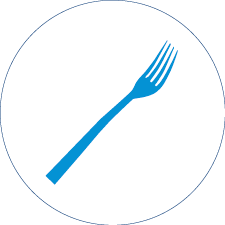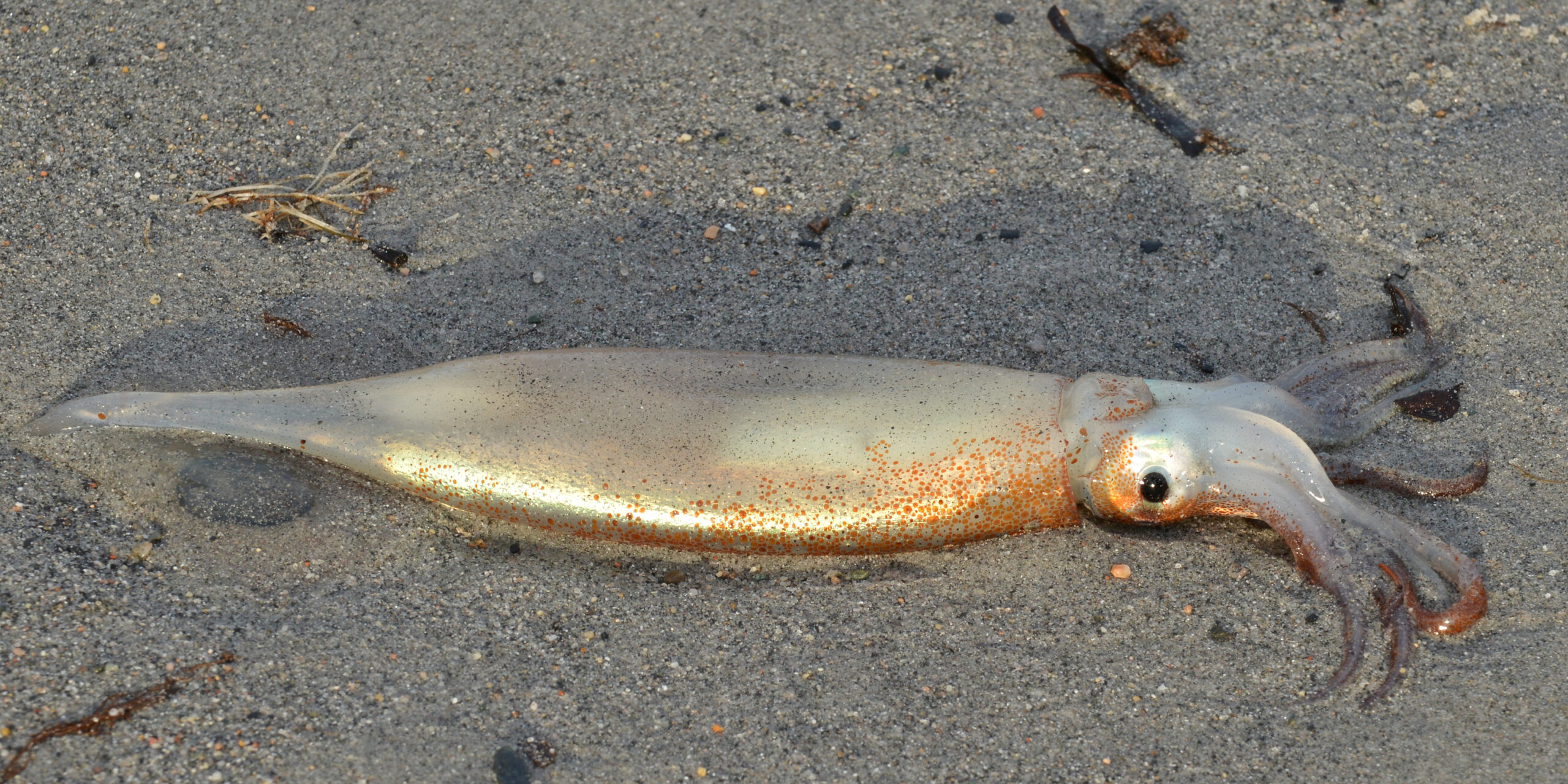
SIZE:
Mantle length of males 18 to 27 cm, up to 31 cm for females.
LIFE EXPECTANCY:
Approximately 1 year.
LIFE CYCLE:
Squid reproduce from June to December and die shortly after, which explains their short life span.

As the beak is the only solid part of the squid, it can remain in the stomach of its predators for a long time and can ultimately become a fossil.
Credit: Claude Nozères, photo taken in 2010.
Lacking bones, the squid has a semi-transparent inner shell, known as a feather, and a porous interior texture. Squid stores gas there to regulate its buoyancy.
Its beak is the only solid part of this cephalopod. It remains in the stomach of its predators for a long time and can ultimately become a fossil.
The siphon serves as a rudder. The squid can propel itself by expelling water through its siphon or ink to make the water cloudy and get out of threatening situations.
The squid has six arms and two tentacles, all with suction cups. These are used to catch and immobilize its prey. It also has two triangular fins that allow it to swim. Finally, the squid’s mantle makes up its body and is where most of the organs are located. Its colour is milky white with a touch of rusty brown. The squid can change colours to defend itself or to communicate.
In the water column, down to 500 m depth.
Squid stay in the deep during the day and migrate near the surface at night to nourish themselves.
PREYS:
Shrimps
Young cods
Squids
Smelts
PREDATORS:
Cods
Dolphins
Northern gannets
An accomplished predator
Squid saliva is filled with toxins that paralyze its prey. Fear not! The toxins do not work on humans.
MACHINES:
Squid jigging.
REGULATIONS:
A total of 14 permits are issued in Québec.
Jigging has been around since the 1800s, expanded in use in the 1970s and then fell out of use in the 1980s. A recovery could be possible, but only with the relearning of the necessary skills.
For the time being, squid, both fresh and frozen, is mainly imported. In 2020, imports were valued at $63 million.
Northern shortfin squid is a Smarter seafood-listed species.
BENEFITS:
Good source of protein, minerals, and vitamin B. Rich in omega-3 fatty acids. Low in fat, as long as it is not eaten fried, of course. Harmful substances, such as mercury, accumulate in the digestive gland, which is not eaten and therefore poses little risk of contamination to humans.
LET’S COOK:
Firm and slightly rubbery white meat, which is sweet to the taste
Squid is often consumed deep-fried, but have you tried it blanched, stuffed, marinated or pan-fried? It can be eaten hot or cold, even raw if it is fresh. It is delicious with lemon juice, garlic or olive oil. Its heavily scented ink is also quite edible.
It will stay fresh for 24 to 48 hours in the refrigerator and up to three months in the freezer.
OUR CULINARY ADVICE:
- Thoroughly clean the squid before starting any prepping.
- Cut along its length to maintain its texture.
- Cook for a short time to keep its meat tender: 10 minutes in a sauce, 15 to 20 minutes in the oven at 375 °F (190 °C).
- If you choose to fry the squid, first remove as much moisture as possible, then fry it at a high temperature for four to five minutes.






